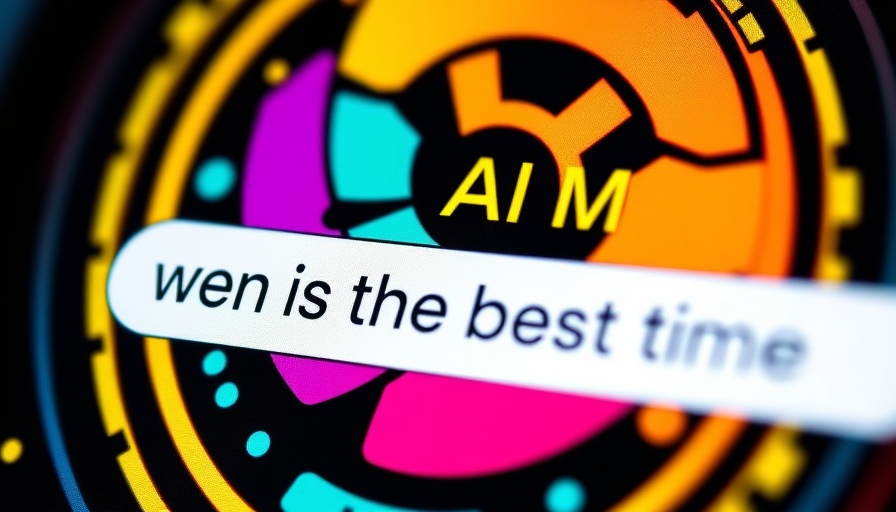
The Dawn of Multimodal Search: A Game Changer for Small Businesses
The recent announcement from Google regarding AI Mode's newfound capability to permit searches via images marks a significant leap forward in how businesses can engage with customers online. For small business owners and marketers, this could represent not just a tool, but a pivotal shift in the way consumers interact with digital content. Google has effectively combined visual search capabilities with AI, enabling users to upload an image and ask nuanced questions about it, resulting in rich, contextually aware responses. This development allows businesses to better showcase their products and services directly through images, enhancing engagement and boosting visibility.
Understanding AI Mode’s Technological Foundations
Google's AI Mode builds on years of innovation in visual search technology and incorporates a custom version of their Gemini AI model. This model can analyze not only individual objects within an image but also the context of those objects—considering how they relate in terms of color, shape, and material. By leveraging a query fan-out technique, AI Mode can issue multiple queries related to an image, leading to a richer response than traditional text-based searches. For marketers, this means that investing in high-quality visuals can ensure better online visibility, as AI-powered tools increasingly prioritize image-based content in search results.
Harnessing the Power of Visuals in Marketing Strategies
For small businesses, integrating visuals into their marketing strategies is no longer optional but essential. With the emergence of AI-driven search capabilities, marketers can utilize images not just as supplementary materials but as pivotal elements of their communication. By ensuring that images are optimized and relevant, businesses can expect to engage their audience more effectively. The ability to respond to customer queries based on visual content means businesses can create richer interactions, driving both traffic and conversions.
Future Predictions: What AI-Driven Image Search Means for Marketing
As AI Mode continues to expand its user base beyond premium subscribers, marketers should prepare for an evolving landscape. The capabilities provided by image recognition software are likely to become a standard expectation for consumers, leading to an increased demand for visually appealing content. Adopting a multimodal search strategy can set businesses apart, positioning them as forward-thinking in an increasingly competitive market. Keeping pace with such advancements can empower marketers to refine their approaches and activate more efficient, consumer-oriented strategies.
Actionable Insights: Steps for Small Businesses to Adapt
To leverage AI Mode effectively, small business owners should consider the following actionable steps:
- Invest in Quality Imagery: Focus on high-resolution, context-rich images that showcase products and services effectively. Use images that prompt questions customers might have.
- Implement SEO Best Practices: Ensure that all visuals are properly optimized with keywords, alt text, and descriptions to maximize search discoverability.
- Engage with Visual Content: Create engaging stories around images to enhance the emotional connection customers have with your brand.
Conclusion: Seizing the Opportunity
The introduction of AI Mode's image search capabilities offers an unprecedented opportunity for small businesses and marketers to boost their online presence. Understanding how to utilize these tools is essential to staying competitive. As technology evolves, so should strategies—by embracing change, businesses can enhance customer interactions and ensure long-term success. To make the most of this shift, start thinking about your visual content strategy today. What steps will you take to leverage multimodal capabilities and connect more deeply with your audience?
 Add Row
Add Row  Add
Add 




Write A Comment